Robert G. Mortimer0123706173, 9780123706171, 9780080878591
Table of contents :
Cover Page……Page 1
Title: Physical Chemistry……Page 4
ISBN 0123706173……Page 5
3 The Second and Third Laws of Thermodynamics: Entropy……Page 8
8 The Thermodynamics of Electrochemical Systems……Page 9
13 Chemical Reaction Mechanisms II: Catalysis and Miscellaneous Topics……Page 10
18 The Electronic States of Atoms. II. The Zero-Order Approximation for Multielectron Atoms……Page 11
23 Optical Spectroscopy and Photochemistry……Page 12
28 The Structure of Solids, Liquids, and Polymers……Page 13
Appendices……Page 14
Preface……Page 16
Acknowledgments……Page 18
Part 1: Thermodynamics and the Macroscopic Description of Physical Systems……Page 20
1 The Behavior of Gases and Liquids……Page 22
1.1 Introduction……Page 23
1.2 Systems and States in Physical Chemistry……Page 31
1.3 Real Gases……Page 40
1.4 The Coexistence of Phases and the Critical Point……Page 46
Summary of the Chapter……Page 54
ADDITIONAL PROBLEMS……Page 55
References……Page 57
2 Work, Heat, and Energy: The First Law of Thermodynamics……Page 58
2.1 Work and the State of a System……Page 59
2.2 Heat……Page 70
2.3 Internal Energy: The First Law of Thermodynamics……Page 74
2.4 Calculation of Amounts of Heat and Energy Changes……Page 79
2.5 Enthalpy……Page 93
2.6 Calculation of Enthalpy Changes of Processes without Chemical Reactions……Page 100
2.7 Calculation of Enthalpy Changes of a Class of Chemical Reactions……Page 105
2.8 Calculation of Energy Changes of Chemical Reactions……Page 113
Summary of the Chapter……Page 120
ADDITIONAL PROBLEMS……Page 121
3 The Second and Third Laws of Thermodynamics: Entropy……Page 124
3.1 The Second Law of Thermodynamics and the Carnot Heat Engine……Page 125
3.2 The Mathematical Statement of the Second Law: Entropy……Page 133
3.3 The Calculation of Entropy Changes……Page 140
3.4 Statistical Entropy……Page 152
3.5 The Third Law of Thermodynamics and Absolute Entropies……Page 158
Summary of the Chapter……Page 166
ADDITIONAL PROBLEMS……Page 167
4 The Thermodynamics of Real Systems……Page 170
4.1 Criteria for Spontaneous Processes and for Equilibrium: The Gibbs and Helmholtz Energies……Page 171
4.2 Fundamental Relations for Closed Simple Systems……Page 177
4.3 Additional Useful Thermodynamic Identities……Page 186
4.4 Gibbs Energy Calculations……Page 194
4.5 Multicomponent Systems……Page 201
4.6 Euler’s Theorem and the Gibbs–Duhem Relation……Page 207
Summary of the Chapter……Page 214
ADDITIONAL PROBLEMS……Page 215
5 Phase Equilibrium……Page 218
5.1 The Fundamental Fact of Phase Equilibrium……Page 219
5.2 The Gibbs Phase Rule……Page 221
5.3 Phase Equilibria in One-Component Systems……Page 224
5.4 The Gibbs Energy and Phase Transitions……Page 234
5.5 Surfaces in One-Component Systems……Page 241
5.6 Surfaces in Multicomponent Systems……Page 249
Summary of the Chapter……Page 253
ADDITIONAL PROBLEMS……Page 254
6 The Thermodynamics of Solutions……Page 256
6.1 Ideal Solutions……Page 257
6.2 Henry’s Law and Dilute Nonelectrolyte Solutions……Page 267
6.3 Activity and Activity Coefficients……Page 277
6.4 The Activities of Nonvolatile Solutes……Page 286
6.5 Thermodynamic Functions of Nonideal Solutions……Page 294
6.6 Phase Diagrams of Nonideal Mixtures……Page 301
6.7 Colligative Properties……Page 311
Summary of the Chapter……Page 318
ADDITIONAL PROBLEMS……Page 319
7 Chemical Equilibrium……Page 322
7.1 Gibbs Energy Changes and the Equilibrium Constant……Page 323
7.2 Reactions Involving Gases and Pure Solids or Liquids……Page 329
7.3 Chemical Equilibrium in Solutions……Page 334
7.4 Equilibria in Solutions of Strong Electrolytes……Page 347
7.5 Buffer Solutions……Page 350
7.6 The Temperature Dependence of Chemical Equilibrium. The Principle of Le Châtelier……Page 354
7.7 Chemical Equilibrium and Biological Systems……Page 362
ADDITIONAL PROBLEMS……Page 367
8 The Thermodynamics of Electrochemical Systems……Page 370
8.1 The Chemical Potential and the Electric Potential……Page 371
8.2 Electrochemical Cells……Page 373
8.3 Half-Cell Potentials and Cell Potentials……Page 380
8.4 The Determination of Activities and Activity Coefficients of Electrolytes……Page 390
8.5 Thermodynamic Information from Electrochemistry……Page 393
ADDITIONAL PROBLEMS……Page 397
Part 2: Dynamics……Page 400
9 Gas Kinetic Theory: The Molecular Theory of Dilute Gases at Equilibrium……Page 402
9.1 Macroscopic and Microscopic States of Macroscopic Systems……Page 403
9.2 A Model System to Represent a Dilute Gas……Page 405
9.3 The Velocity Probability Distribution……Page 413
9.4 The Distribution of Molecular Speeds……Page 424
9.5 The Pressure of a Dilute Gas……Page 430
9.6 Effusion andWall Collisions……Page 435
9.7 The Model System with Potential Energy……Page 437
9.8 The Hard-Sphere Gas……Page 441
9.9 The Molecular Structure of Liquids……Page 453
Summary of the Chapter……Page 455
ADDITIONAL PROBLEMS……Page 456
10 Transport Processes……Page 460
10.1 The Macroscopic Description of Nonequilibrium States……Page 461
10.2 Transport Processes……Page 463
10.3 The Gas Kinetic Theory of Transport Processes in Hard-Sphere Gases……Page 479
10.4 Transport Processes in Liquids……Page 486
10.5 Electrical Conduction in Electrolyte Solutions……Page 494
Summary of the Chapter……Page 501
ADDITIONAL PROBLEMS……Page 502
11 The Rates of Chemical Reactions……Page 504
11.1 The Macroscopic Description of Chemical Reaction Rates……Page 505
11.2 Forward Reactions with One Reactant……Page 507
11.3 Forward Reactions with More Than One Reactant……Page 518
11.4 Inclusion of a Reverse Reaction. Chemical Equilibrium……Page 526
11.5 A Simple Reaction Mechanism: Two Consecutive Steps……Page 529
11.6 Competing Reactions……Page 532
11.7 The Experimental Study of Fast Reactions……Page 534
Summary of the Chapter……Page 540
ADDITIONAL PROBLEMS……Page 541
12 Chemical Reaction Mechanisms I: Rate Laws and Mechanisms……Page 542
12.1 Reaction Mechanisms and Elementary Processes in Gases……Page 543
12.2 Elementary Processes in Liquid Solutions……Page 546
12.3 The Temperature Dependence of Rate Constants……Page 552
12.4 Reaction Mechanisms and Rate Laws……Page 559
12.5 Chain Reactions……Page 575
Summary of the Chapter……Page 580
ADDITIONAL PROBLEMS……Page 581
13 Chemical Reaction Mechanisms II: Catalysis and Miscellaneous Topics……Page 584
13.1 Catalysis……Page 585
13.2 Competing Mechanisms and the Principle of Detailed Balance……Page 602
13.3 Autocatalysis and Oscillatory Chemical Reactions……Page 604
13.4 The Reaction Kinetics of Polymer Formation……Page 608
13.5 Nonequilibrium Electrochemistry……Page 614
13.6 Experimental Molecular Study of Chemical Reaction Mechanisms……Page 627
ADDITIONAL PROBLEMS……Page 634
Part 3: The Molecular Nature of Matter……Page 636
14 Classical Mechanics and the Old Quantum Theory……Page 638
14.1 Introduction……Page 639
14.2 Classical Mechanics……Page 640
14.3 Classical Waves……Page 648
14.4 The Old Quantum Theory……Page 659
ADDITIONAL PROBLEMS……Page 671
15 The Principles of Quantum Mechanics. I. De Broglie Waves and the Schrödinger Equation……Page 672
15.1 De Broglie Waves……Page 673
15.2 The Schrödinger Equation……Page 676
15.3 The Particle in a Box and the Free Particle……Page 682
15.4 The Quantum Harmonic Oscillator……Page 693
Summary of the Chapter……Page 699
ADDITIONAL PROBLEMS……Page 700
16 The Principles of Quantum Mechanics. II. The Postulates of Quantum Mechanics……Page 702
16.2 The Third Postulate. Mathematical Operators and Mechanical Variables……Page 703
16.3 The Operator Corresponding to a Given Variable……Page 707
16.4 Postulate 4 and Expectation Values……Page 715
16.5 The Uncertainty Principle of Heisenberg……Page 730
16.6 Postulate 5. Measurements and the Determination of the State of a System……Page 736
Summary of the Chapter……Page 740
ADDITIONAL PROBLEMS……Page 741
17 The Electronic States of Atoms. I. The Hydrogen Atom……Page 744
17.1 The Hydrogen Atom and the Central Force System……Page 745
17.2 The Relative Schrödinger Equation. Angular Momentum……Page 748
17.3 The Radial Factor in the Hydrogen Atom Wave Function. The Energy Levels of the Hydrogen Atom……Page 755
17.4 The Orbitals of the Hydrogen-Like Atom……Page 760
17.5 Expectation Values in the Hydrogen Atom……Page 768
17.6 The Time-DependentWave Functions of the Hydrogen Atom……Page 772
17.7 The Intrinsic Angular Momentum of the Electron. “Spin”……Page 774
Summary of the Chapter……Page 778
ADDITIONAL PROBLEMS……Page 779
18 The Electronic States of Atoms. II. The Zero-Order Approximation for Multielectron Atoms……Page 782
18.1 The Helium-Like Atom……Page 783
18.2 The Indistinguishability of Electrons and the Pauli Exclusion Principle……Page 785
18.3 The Ground State of the Helium Atom in Zero Order……Page 787
18.4 Excited States of the Helium Atom……Page 791
18.5 Angular Momentum in the Helium Atom……Page 793
18.6 The Lithium Atom……Page 800
18.7 Atoms with More Than Three Electrons……Page 803
ADDITIONAL PROBLEMS……Page 805
19 The Electronic States of Atoms. III. Higher-Order Approximations……Page 808
19.1 The Variation Method and Its Application to the Helium Atom……Page 809
19.2 The Self-Consistent Field Method……Page 815
19.3 The Perturbation Method and Its Application to the Ground State of the Helium Atom……Page 818
19.4 Excited States of the Helium Atom. Degenerate Perturbation Theory……Page 822
19.5 The Density Functional Method……Page 824
19.6 Atoms with More Than Two Electrons……Page 825
Summary of the Chapter……Page 838
ADDITIONAL PROBLEMS……Page 839
20 The Electronic States of Diatomic Molecules……Page 842
20.1 The Born–Oppenheimer Approximation and the Hydrogen Molecule Ion……Page 843
20.2 LCAOMOs. Approximate Molecular Orbitals That Are Linear Combinations of Atomic Orbitals……Page 852
20.3 Homonuclear Diatomic Molecules……Page 857
20.4 Heteronuclear Diatomic Molecules……Page 870
Summary of the Chapter……Page 884
ADDITIONAL PROBLEMS……Page 885
21 The Electronic Structure of Polyatomic Molecules……Page 886
21.1 The BeH2 Molecule and the sp Hybrid Orbitals……Page 887
21.2 The BH3 Molecule and the sp2 Hybrid Orbitals……Page 890
21.3 The CH4, NH3, and H2O Molecules and the sp3 Hybrid Orbitals……Page 892
21.4 Molecules with Multiple Bonds……Page 897
21.5 The Valence-Bond Description of Polyatomic Molecules……Page 900
21.6 Delocalized Bonding……Page 904
21.7 The Free-Electron Molecular Orbital Method……Page 911
21.8 Applications of Symmetry to Molecular Orbitals……Page 913
21.9 Groups of Symmetry Operators……Page 915
21.10 More Advanced Treatments of Molecular Electronic Structure. Computational Chemistry……Page 923
ADDITIONAL PROBLEMS……Page 931
22 Translational, Rotational, and Vibrational States of Atoms and Molecules……Page 934
22.1 The Translational States of Atoms……Page 935
22.2 The Nonelectronic States of Diatomic Molecules……Page 938
22.3 Nuclear Spins andWave Function Symmetry……Page 949
22.4 The Rotation and Vibration of Polyatomic Molecules……Page 952
22.5 The Equilibrium Populations of Molecular States……Page 961
Summary of the Chapter……Page 966
ADDITIONAL PROBLEMS……Page 967
23 Optical Spectroscopy and Photochemistry……Page 968
23.1 Emission/Absorption Spectroscopy and Energy Levels……Page 969
23.2 The Spectra of Atoms……Page 978
23.3 Rotational and Vibrational Spectra of Diatomic Molecules……Page 980
23.4 Electronic Spectra of Diatomic Molecules……Page 991
23.5 Spectra of Polyatomic Molecules……Page 994
23.6 Fluorescence, Phosphorescence, and Photochemistry……Page 998
23.7 Raman Spectroscopy……Page 1004
23.8 Other Types of Spectroscopy……Page 1010
Summary of the Chapter……Page 1015
ADDITIONAL PROBLEMS……Page 1017
24 Magnetic Resonance Spectroscopy……Page 1020
24.1 Magnetic Fields and Magnetic Dipoles……Page 1021
24.2 Electronic and Nuclear Magnetic Dipoles……Page 1025
24.3 Electron Spin Resonance Spectroscopy……Page 1029
24.4 Nuclear Magnetic Resonance Spectroscopy……Page 1033
24.5 Fourier Transform NMR Spectroscopy……Page 1043
Summary of the Chapter……Page 1052
ADDITIONAL PROBLEMS……Page 1053
Part 4: The Reconciliation of the Macroscopic and Molecular Theories of Matter……Page 1056
25 Equilibrium Statistical Mechanics. I. The Probability Distribution for Molecular States……Page 1058
25.1 The Quantum Statistical Mechanics of a Simple Model System……Page 1059
25.2 The Probability Distribution for a Dilute Gas……Page 1066
25.3 The Probability Distribution and the Molecular Partition Function……Page 1074
25.4 The Calculation of Molecular Partition Functions……Page 1083
ADDITIONAL PROBLEMS……Page 1096
26 Equilibrium Statistical Mechanics. II. Statistical Thermodynamics……Page 1100
26.1 The Statistical Thermodynamics of a Dilute Gas……Page 1101
26.2 Working Equations for the Thermodynamic Functions of a Dilute Gas……Page 1108
26.3 Chemical Equilibrium in Dilute Gases……Page 1120
26.4 The Activated Complex Theory of Bimolecular Chemical Reaction Rates in Dilute Gases……Page 1125
26.5 Miscellaneous Topics in Statistical Thermodynamics……Page 1135
Summary of the Chapter……Page 1137
ADDITIONAL PROBLEMS……Page 1138
27 Equilibrium Statistical Mechanics. III. Ensembles……Page 1140
27.1 The Canonical Ensemble……Page 1141
27.2 Thermodynamic Functions in the Canonical Ensemble……Page 1147
27.3 The Dilute Gas in the Canonical Ensemble……Page 1149
27.4 Classical Statistical Mechanics……Page 1152
27.5 Thermodynamic Functions in the Classical Canonical Ensemble……Page 1160
27.6 The Classical Statistical Mechanics of Dense Gases and Liquids……Page 1166
Summary of the Chapter……Page 1169
ADDITIONAL PROBLEMS……Page 1170
28 The Structure of Solids, Liquids, and Polymers……Page 1172
28.1 The Structure of Solids……Page 1173
28.2 Crystal Vibrations……Page 1181
28.3 The Electronic Structure of Crystalline Solids……Page 1190
28.4 Electrical Resistance in Solids……Page 1198
28.5 The Structure of Liquids……Page 1203
28.6 Approximate Theories of Transport Processes in Liquids……Page 1207
28.7 Polymer Conformation……Page 1213
28.8 Polymers in Solution……Page 1217
28.9 Rubber Elasticity……Page 1219
28.10 Nanomaterials……Page 1224
Summary of the Chapter……Page 1225
ADDITIONAL PROBLEMS……Page 1226
A Tables of Numerical Data……Page 1228
B.1 Differential Calculus with Several Variables……Page 1254
B.2 Integral Calculus with Several Variables……Page 1257
B.3 Vectors……Page 1260
B.4 Solution of a Differential Equation from the Two-Step Mechanism of Chapter 11……Page 1264
B.5 Complex and Imaginary Quantities……Page 1265
B.6 Some Properties of Hermitian Operators……Page 1266
B.7 Matrices and Determinants……Page 1268
B.8 Fourier Series……Page 1272
B.9 Fourier Integrals (Fourier Transforms)……Page 1274
C.1 Indefinite Integrals……Page 1276
C.2 Definite Integrals……Page 1277
C.3 The Error Function……Page 1278
D.1 Caratheodory’s Theorem……Page 1280
D.2 Proof That the Liquid and Vapor Curves Are Tangent at an Azeotrope……Page 1281
D.3 Euler’s Theorem……Page 1282
D.4 The Method of Intercepts……Page 1283
D.5 An Integration for the Collision Theory of Bimolecular Reactions……Page 1284
E.1 Newton’s Laws of Motion……Page 1286
E.2 Derivation of theWave Equation for a Flexible String……Page 1287
E.3 Lagrangian Mechanics……Page 1289
E.4 Hamiltonian Mechanics……Page 1290
E.5 The Two-Body Problem……Page 1291
F.1 The Classical Wave Equations for Electromagnetic Radiation……Page 1294
F.2 The Particle in a Three-Dimensional Box……Page 1295
F.3 The Time-Independent Schrödinger Equation for the Harmonic Oscillator (the Hermite Equation)……Page 1297
F.4 The Hydrogen Atom Energy Eigenfunctions……Page 1299
G.1 The Nondegenerate Case……Page 1302
G.2 The Degenerate Case……Page 1304
H The Hückel Method……Page 1308
I.1 Representations of the C2v Group……Page 1312
I.2 Classes in a Group……Page 1314
I.3 Character Tables……Page 1315
I.4 Bases for Representations……Page 1316
I.5 Applications of Group Theory to Molecular Orbitals……Page 1318
J Symbols Used in This Book……Page 1322
K Answers to Numerical Exercises and Odd-Numbered Numerical Problems……Page 1328
A……Page 1370
B……Page 1371
C……Page 1372
D……Page 1375
E……Page 1377
F……Page 1381
G……Page 1382
H……Page 1383
I……Page 1385
L……Page 1387
M……Page 1388
N……Page 1391
P……Page 1392
R……Page 1395
S……Page 1397
T……Page 1401
V……Page 1403
X,Z……Page 1404
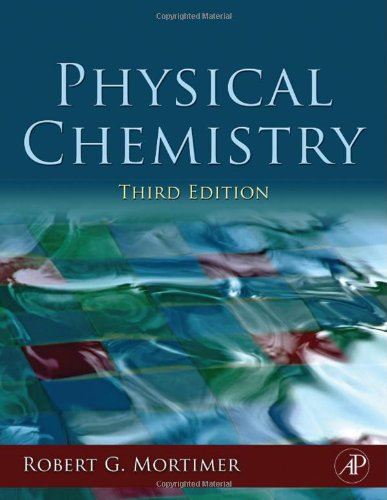
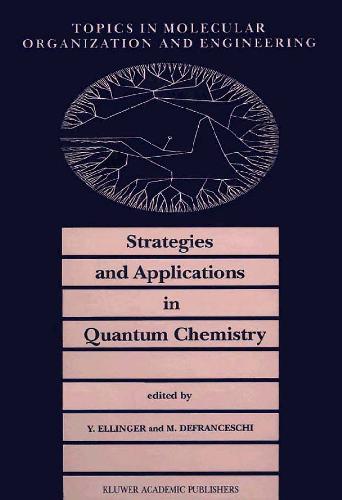
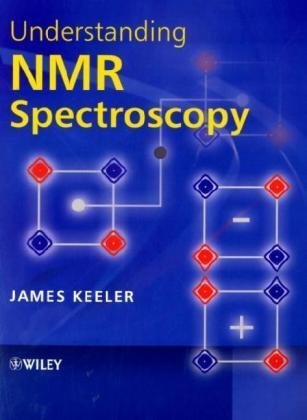

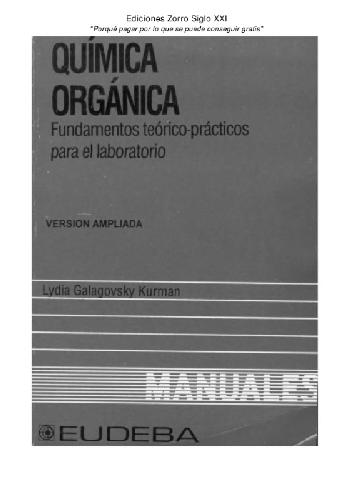

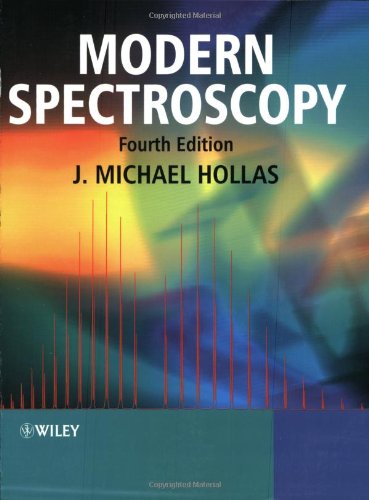
Reviews
There are no reviews yet.